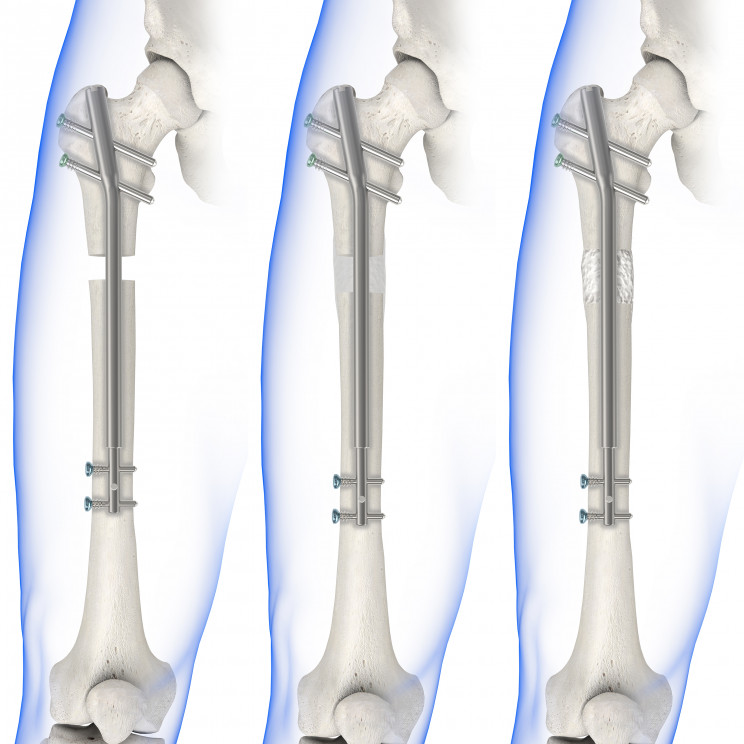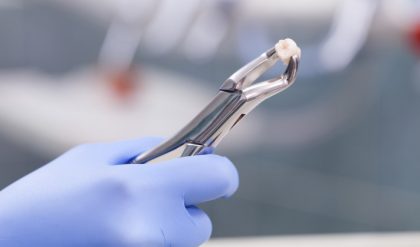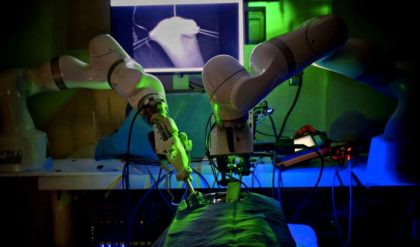
The limb lengthening surgery that is carried out today is based on the Ilizarov process, which uses an apparatus, a circular external fixation device first developed by Soviet orthopedic surgeon Gavriil Ilizarov in the 1950s.
The device is a metal frame made of stainless steel or titanium rings that surround a broken leg. The frame is attached to the leg bones with tensioned heavy-gauge wires that provide weight-bearing, structural support to the limb while immobilizing it.
At first, the apparatus was meant to treat unhealed broken bones (nonunions). In fact, Dr. Ilizarov cured a nonunion in the leg of Valeriy Brumel, the 1964 Olympic champion and world record holder in the men’s high jump, who had suffered a motorcycle accident in 1965.
Then it was used to correct deformities in the lower limbs —such as leg-length discrepancies— through a procedure called distraction osteogenesis (DO), which is the base of the limb lengthening surgery.
First, the doctors carefully severe the bone without severing the periosteum around it. They attach the Ilizarov apparatus to the bones. The apparatus holds the severed bone in place and separates halves of the bone by a tiny amount. As new bone is laid down, the device’s rings are adjusted to separate the bone segments little by little.
Yes, this is dangerous. If done wrong, the patient can end up with nonunions or fibrous connective tissue instead of a bone, malformed bone, neurological and vascular injury, and loss of athletic ability. But if the readjustment is done at the right rates (usually around one millimeter per day), the process stimulates bone growth in the “gap” between the bone segments.
The result is a longer limb —or limbs. How much you grow depends on when you stop the readjustment of the apparatus and let the bone heal back.
The path to tallness is long and tedious
Limb lengthening surgery poses several risks and complications. Patients can have infections, nerve damage, blood clots, and incomplete healing of the bones. Due to these risks, the Ministry of Health of China banned limb lengthening procedures for cosmetic purposes in 2006.
The surgery itself is not that complicated, though. The procedure to attach or remove the fixation device lasts about two hours. It’s the post-operative stage and the limb lengthening itself that demand much more time and patience.
Recovery is long. It takes several months of daily rehabilitation for the patient to regain full mobility, especially if they have surgery on both of their legs. They often must use crutches, walking frames, or wheelchairs to move.
After the new bone is consolidated, patients must undergo another surgery to extract the fixation device. This can happen up to one year after the initial procedure to fix it.
According to a study carried out by several South Korean physicians, full recovery from limb lengthening surgery —including the ability to play light sports— is expected to occur within two years. Even then, 31.2% of operated patients will see a decrease in their ability to conduct moderate-to-strenuous sports activities, which means that some athletic ability might be lost in the limb lengthening process.
Serious complications are more common in clinics where the staff is not fully trained or experienced in this kind of procedure. Doctors from the Russian Ilizarov Scientific Center for Restorative Traumatology and Orthopedics stated in a paper that some patients are not eligible for the surgery because of mental health issues such as body dysmorphic disorder, or because they have unrealistic expectations about the surgery.
Some of these patients, “have gone to other centers with less experience with this technique and have returned to us for treatment of their complications.”
However, many people go to these less-experienced centers for the price. In the US, the cost of limb lengthening surgery starts at around $75,000 and health insurance generally does not cover it if it’s an aesthetic, elective procedure – rather than a corrective procedure. Something similar happens in the UK, where the surgery costs around £50,000 (67,000 USD) and is only offered by certain private clinics.
This has triggered medical tourism to countries like Russia, where the limb lengthening surgery costs about $16,000, or India, where it can be as cheap as $5,000 – but worryingly unregulated.
“This is one of the most difficult cosmetic surgeries to perform, and people are doing it after just one or two months’ fellowship, following a doctor who is probably experimenting himself. There are no colleges, no proper training, nothing.”
Other methods for limb lengthening
As you can imagine, not all limb lengthening surgeries rely on the Ilizarov apparatus, even in its modern versions. There is also a newer approach that works internally, and it’s called intramedullary limb lengthening.

One commercial device using this new, truly modern method is the Precice system, made of implantable nails and screws that are controlled by an external remote controller. The programmable controller uses “proprietary magnetic technology” to allow the patient to lengthen the implant inside the bone by a stipulated amount each day, and stimulate bone growth after the surgical implant.
Another option is the Fitbone nail, a pen-shaped motorized “nail” that is literally inserted into the femur or the tibia and is controlled with an external control set. The patient can send impulses to an implanted receiver in the nail to stimulate bone growth from the inside.
Intramedullary limb lengthening that uses surgical products like these is a less invasive alternative to the use of the Ilizarov apparatus, and it can have lower chances of infection. Scarring and other complications are minimal and hospitalization is shorter as the devices can be controlled from home.
If they’re not very popular, it’s probably because they’re significantly more expensive than the Ilizarov apparatus. External fixators alone cost around $5,000 while the Fitbone costs around $15,000, making limb lengthening even less affordable for most people.






Comments are closed.